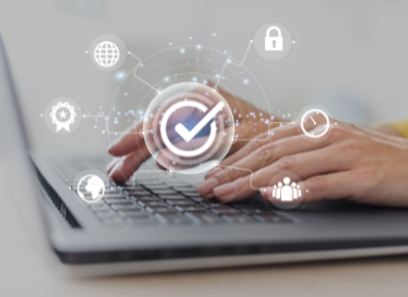Cybersecurity Advisory 2025 Made Simple: What Leaders Need to Know
Wiki Article
Why Every Organization Needs a Solid Cybersecurity Advisory 2025 Approach
In 2025, organizations encounter a swiftly progressing cyber threat landscape. The class of strikes, driven by developments in innovation, demands a strong cybersecurity consultatory approach. This approach not just enhances danger assessment yet additionally cultivates a society of safety understanding among workers. As essential framework becomes significantly vulnerable, the demand for positive actions ends up being clear. What actions should organizations require to ensure their defenses are robust adequate to stand up to these challenges?The Evolving Cyber Threat Landscape
As cyber risks continue to advance, organizations must continue to be cautious in adapting their safety measures. The landscape of cyber threats is noted by increasing refinement, with foes employing innovative techniques such as synthetic knowledge and artificial intelligence to make use of susceptabilities. Ransomware assaults have actually surged, targeting essential facilities and requiring hefty ransoms, while phishing plans have ended up being extra deceptive, often bypassing conventional security procedures.In addition, the surge of the Web of Points (IoT) has actually expanded the strike surface, providing brand-new access points for cybercriminals. Organizations face challenges not only from outside dangers however also from expert threats, as staff members might unintentionally compromise delicate information. To successfully combat these developing dangers, services have to prioritize aggressive approaches, consisting of routine updates to their safety facilities and constant employee training. By staying educated concerning the most recent trends in cyber risks, companies can much better guard their assets and keep strength in an increasingly hostile digital atmosphere.
The Significance of Threat Assessment
Recognizing the value of threat analysis is critical for organizations aiming to fortify their cybersecurity pose. An extensive threat evaluation recognizes vulnerabilities and potential threats, making it possible for companies to prioritize their resources efficiently. By assessing the probability and influence of different cyber risks, organizations can make educated choices concerning their protection actions.Furthermore, risk assessments aid companies understand their compliance commitments and the legal implications of data violations. They supply insights right into the company's current protection techniques and emphasize areas requiring improvement. This aggressive technique fosters a society of security recognition among employees, motivating them to recognize and report potential hazards.
Performing routine risk assessments makes certain that organizations stay agile in attending to arising risks in the dynamic cyber landscape. Inevitably, a robust danger analysis procedure is important in creating a tailored cybersecurity approach that aligns with organizational goals while securing essential assets.
Positive Procedures for Cyber Protection
Applying aggressive measures for cyber defense is vital for organizations looking for to alleviate potential risks before they escalate. An extensive cybersecurity technique need to include normal vulnerability evaluations and penetration testing to identify weaknesses in systems. By carrying out these assessments, organizations can deal with susceptabilities prior to they are made use of by destructive actors.Additionally, continuous monitoring of networks and systems is vital. This entails using innovative threat discovery innovations that can identify unusual activity in real-time, permitting swift responses to potential intrusions. Staff member training on cybersecurity finest techniques is vital, as human mistake usually provides significant threats. Organizations needs to promote a culture of security recognition, making sure that workers understand their duty in securing sensitive information.
Establishing an event response plan makes it possible for organizations to respond effectively to breaches, decreasing damages and healing time. By executing these positive steps, companies can substantially enhance their cyber protection posture and guard their digital properties.
Enhancing Remote Work Security
While the change to remote work has actually provided flexibility and convenience, it has actually also introduced considerable cybersecurity obstacles that companies need to resolve. To enhance remote work security, firms need to carry out robust protection protocols that protect delicate data. This includes the use of digital private networks (VPNs) to secure net connections, making sure that employees can access firm resources securely.In addition, organizations must mandate multi-factor verification (MFA) to add an extra layer of security for remote accessibility - Reps and Warranties. Routine training sessions for workers on recognizing phishing attempts and maintaining protected practices are additionally essential
Organizations should carry out routine safety assessments to identify vulnerabilities in their remote work infrastructure. By taking on these strategies, organizations can effectively minimize risks related to remote job, securing both their data and their reputation. Emphasizing a culture of cybersecurity understanding will certainly additionally equip employees to contribute to a secure remote workplace.
Leveraging Cloud Technologies Securely
A growing variety of companies are moving to cloud technologies to boost functional effectiveness and scalability, however this shift likewise necessitates rigorous safety and security measures. Properly leveraging cloud solutions calls for a thorough understanding of prospective vulnerabilities and threats connected with shared settings. Organizations must execute strong access controls, making certain that only accredited employees can access delicate information. File encryption of information both in transit and at remainder is crucial to guarding information from unapproved access.Regular audits and tracking can help identify abnormalities and prospective threats, enabling organizations to react proactively. In addition, embracing a multi-cloud approach can decrease dependence on a single company, potentially lessening the impact of breaches. Staff member training on cloud safety best techniques is important to foster a security-aware society. By incorporating these steps right into their cloud technique, companies can harness the advantages of cloud technologies while mitigating protection risks successfully.
Keeping Client Trust Fund and Credibility
Exactly how can companies guarantee that client trust fund and reputation continue to be undamaged in a progressively digital landscape? To accomplish this, organizations must prioritize transparency and proactive communication. By clearly detailing their cybersecurity actions and promptly addressing any potential violations, they can cultivate a society of trust fund. Consistently updating consumers concerning protection methods and possible hazards demonstrates a dedication to guarding their information.In addition, companies look these up must spend in comprehensive cybersecurity training for employees, guaranteeing that everybody comprehends their role in securing consumer details. Applying durable safety procedures, such as multi-factor authentication and file encryption, further strengthens the organization's dedication to maintaining client count on.
Additionally, gathering and acting upon customer responses relating to protection practices can enhance connections. By being responsive and adaptive to consumer issues, organizations not just shield their online reputation however likewise enhance their reliability in the marketplace. Therefore, a steadfast focus on cybersecurity is necessary for sustaining consumer depend on.
Ensuring Regulatory Compliance and Legal Defense

A strong cybersecurity advising method helps organizations determine applicable guidelines, such as GDPR, HIPAA, and CCPA, and execute essential steps to abide by them. This technique not only makes sure compliance however additionally boosts legal security versus prospective breaches and misuse of information.
Furthermore, organizations can profit from regular audits and evaluations to assess their cybersecurity stance and click this identify vulnerabilities. By fostering a society of compliance and continuous renovation, companies can mitigate threats and demonstrate their commitment to protecting sensitive information. Ultimately, investing in a robust cybersecurity approach boosts both governing compliance and legal security, securing the organization's future.
Frequently Asked Inquiries

How Can Organizations Identify Their Certain Cybersecurity Needs?
Organizations can determine their particular cybersecurity requirements by carrying out danger analyses, assessing existing security steps, evaluating prospective dangers, and involving with stakeholders to comprehend susceptabilities, inevitably creating a customized method to attend to unique challenges.What Budget Should Be Designated for Cybersecurity Advisory Solutions?

Exactly How Commonly Should Cybersecurity Methods Be Updated?
Cybersecurity techniques ought to be upgraded a minimum of annually, as well as after significant cases or changes in technology (ERC Updates). Regular reviews make sure performance versus developing dangers and conformity with regulatory requirements, preserving business resilience versus cyber dangersWhat Certifications Should a Cybersecurity Advisor Possess?
see this site A cybersecurity advisor should have pertinent accreditations, such as copyright or CISM, considerable experience in risk monitoring, understanding of compliance guidelines, solid logical abilities, and the capability to interact complex concepts successfully to diverse audiences.Exactly How Can Organizations Gauge the Effectiveness of Their Cybersecurity Approach?
Organizations can determine the effectiveness of their cybersecurity strategy through regular audits, keeping an eye on event action times, analyzing threat intelligence, conducting staff member training assessments, and assessing compliance with industry standards and regulations to ensure continual renovation.Report this wiki page